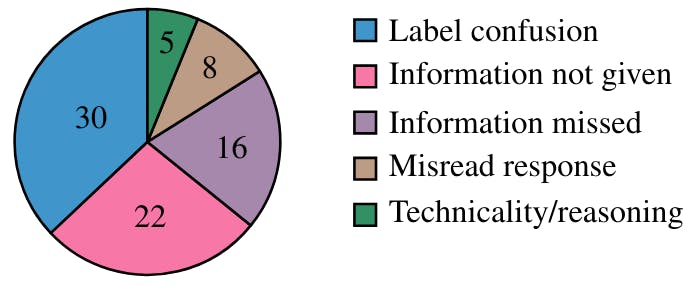African founders have often been criticised for their rapid pan-African expansion drives. Understandably, the African continent holds undeniable allure for entrepreneurs with a balance of lofty ambitions and business acumen to serve marginalised groups. With over 1.4 billion people and an estimated combined GDP of $3.1 trillion, the African continent presents boundless opportunities for indigenous startups.
Drawing from recent successes and failures, a deeper look at local startups’ pan-African expansion reveals that a one-size-fits-all model might not always be the best for founders and VCs looking to expand across borders. From Nairobi to Lagos, Cape Town to Cairo, the vision of a single African market under the African Free Trade Area (AfCFTA) has promised to lift the trade barriers and logistical hurdles. However, the reality of pan-African expansion for startups is still far more complex.
A Pan-African dream
Building scale and maintaining a lower burn rate can coexist in a symbiotic relationship. Every founder aspires to scale their business, yet many—along with their investors—fail to evaluate the broader impact of every strategic decision. The consequences are often severe, leading to layoffs and shutdowns after ambitious attempts to scale.
For tech startups in the logistics, fintech, and e-commerce sectors, expansions can create the network effect needed to grow and unlock new revenue streams. Success stories like M-Pesa’s, Jumia’s, and Flutterwave’s inspire founders to embrace the pan-African dream, presenting cross-border expansion as a benchmark.
The catch is that these examples are exceptions, not norms. The diversity of African markets, including cultural differences, a fragmented regulatory landscape, and varying levels of infrastructure, makes expanding across the continent daunting. Too often, the pan-African dream collides with harsh realities like regulatory challenges or different consumption behaviours.
However, the challenges startups face in expansion drives offer valuable lessons to founders. In 2021, Twiga Foods, a Kenyan B2B agricultural produce platform, reversed its plan to expand into Nigeria. The startup struggled to replicate its centralised distribution model. It paused its pan-African ambition to focus on deepening its footprint in Kenya.
Despite M-Pesa, Jumia, and Flutterwave’s success in their respective home markets, some regional markets have been a hard nut to crack.
For instance, M-Pesa struggled to gain traction in South Africa due to the high penetration of card payments and a significant proportion of the population already being banked. Flutterwave has faced delays in securing licensing in Kenya, hindered by the absence of clear regulatory frameworks. Similarly, Jumia had to shut down its operations in Tanzania due to restrictive local laws. In most cases, the barriers are due to outdated regulations, like in Kenya where payment systems and banking laws do not recognise fintechs outside the traditional mobile money and financial institutions.
M-Pesa’s success in the early days was tied to its ability to reach millions of unbanked Kenyans, especially in rural areas without physical banks. It enabled people to receive and send payments, bypassing traditional banking systems. For its part, Jumia’s achievements can be attributed to good market timing and adaptability to challenges.
Jumia launched in 2012 when Africa’s e-commerce was in its infancy, giving it brand recognition that has helped it build customer trust. The company’s localised approach in its expansion has helped it set shop in about 10 African countries.
Bureaucratic inefficiency and corruption in key institutions like parliament slow reforms. It permits political patronage where powerful individuals and companies influence law changes. Many reforms have also been tied to external conditions from multilateral lenders like the World Bank and the International Monetary Fund (IMF). While some reform recommendations open up sectors—like the current push from the IMF to regulate crypto—others are unpopular and face resistance from industry players.
African founders are exploring mergers and acquisitions to skirt challenges hampering expansion like delays in licensing. Acquiring an existing player in the target market is proving to be a shorter route to expanding across the continent. In 2024, Nigerian fintech Rise acquired Kenya’s Hisa, giving it access to the market without licensing delays from the regulators. Moniepoint’s acquisition of Kopokopo also achieved the same goal.
Harmonisation of laws could ease startups’ expansion headaches across Africa. Regional trade blocs like EAC, ECOWAS and SADC should adopt a unified regulation approach. For instance, as EAC works on a monetary and customs union, they should adopt a single licensing regime for startups and companies.
Movement across Africa is still more expensive than on other continents. Increased investments in roads, rail and air transport could cut travel costs for talent and goods. In addition, massive investment in digital infrastructure like fibre optic cables is required to increase connectivity and bring down internet costs.
Next Wave continues after this ad.
Why one-size-fits-all doesn’t work
Even with six regional trade blocs, each country on the continent has its regulatory frameworks, consumer behaviour, and infrastructure challenges. These complexities are often underestimated by startups, leading to costly missteps.
Take Sendy and Copia, for example. Both Kenyan startups expanded across borders prematurely, before consolidating their presence in their home market. Copia, a B2C e-commerce platform, ventured into Uganda in 2022 while still grappling with order fulfilment issues in Kenya . Such rushed expansions can stretch resources thin and jeopardise long-term growth, which is why it’s important to master the home market before venturing into new territories.
Consumer spending habits, for instance, are one behaviour that startups often overlook. Southern African consumers have a higher spending power and prefer formal retail stores and e-commerce platforms. In East and Central Africa, informal markets play a bigger role.
A strategy that works in Kenya may fail in Uganda or Ghana, and a product that resonates well with the South African market might struggle to find traction in Senegal. These are the realities of Africa’s diverse market.
Expanding across the continent demands a significant financial resource, which many startups backed by their VCs might not sustain in the long term.
While regulatory and consumer behaviours are some hurdles facing founders seeking new markets, leadership, funding and scalability also contribute to the failures. Local leadership in startups is critical in building an understanding of new markets.
Next Wave continues after this ad.
Is Pan-Africanism necessary?
Is pan-African expansion a prerequisite for local startup success? Companies like Kenya’s biggest telco, Safaricom, Nigeria’s Paystack, and South Africa’s Tyme Bank have achieved massive success without immediate regional expansion. Safaricom, now the most profitable public company in Kenya, ventured into Ethiopia in 2021, over two decades after launching in Kenya.
Despite Tyme Bank’s huge breakthrough in the South African market, the company has not revealed any plans to expand to other regions with huge unbanked populations.
By concentrating on their home markets, these companies have created value for their customers and investors.
Not every business model requires a continental expansion. Startups that serve hyper-local and specialised markets may be successful when they stay local. Examples include climate tech, agri-tech, health tech, and urban transportation startups.
Best approach?
For founders considering cross-border expansion, a phased approach sounds more sustainable. Any company has the right to explore new growth areas, including markets, but building a successful operation away from home takes more than money. Founders’ ability to execute and get financial returns with the least investment is often tested. Unfortunately, many have failed the mark.
Starting local by building a strong foundation in a single market helps startups make a proof of concept. Those who succeed can expand into regions with shared culture or economic blocs, like the East African Community (EAC), and enter additional markets when funding and operational efficiency are achieved.
Mergers and acquisitions could also be another path. Acquiring or merging with local players with licenses and understanding their markets could save startups unnecessary pitfalls. Startups can learn this by studying the market trends and benchmarking with cases of successful and failed pan-African expansion.
Adonijah Ndege – Senior Reporter
Feel free to email newsletters[at]bigcabal.com, with your thoughts about this edition of NextWave. Or just click reply to share your thoughts and feedback.
We’d love to hear from you
Psst! Down here!
Thanks for reading today’s Next Wave. Please share. Or subscribe if someone shared it to you here for free to get fresh perspectives on the progress of digital innovation in Africa every Sunday.
As always feel free to email a reply or response to this essay. I enjoy reading those emails a lot.
TC Daily newsletter is out daily (Mon – Fri) brief of all the technology and business stories you need to know. Get it in your inbox each weekday at 7 AM (WAT).
Follow on Twitter, Instagram, Facebook, and LinkedIn to stay engaged in our real-time conversations on tech and innovation in Africa.











